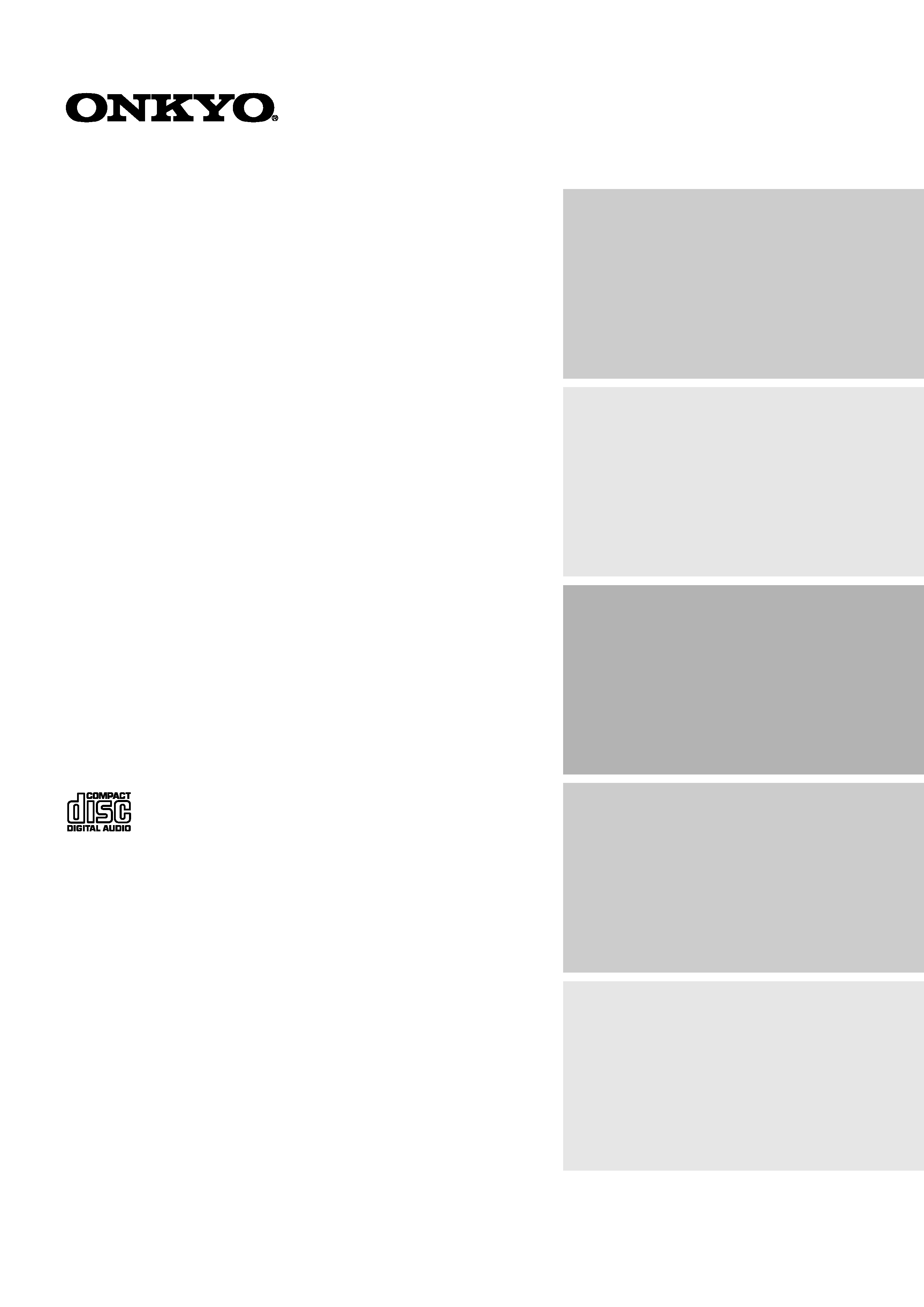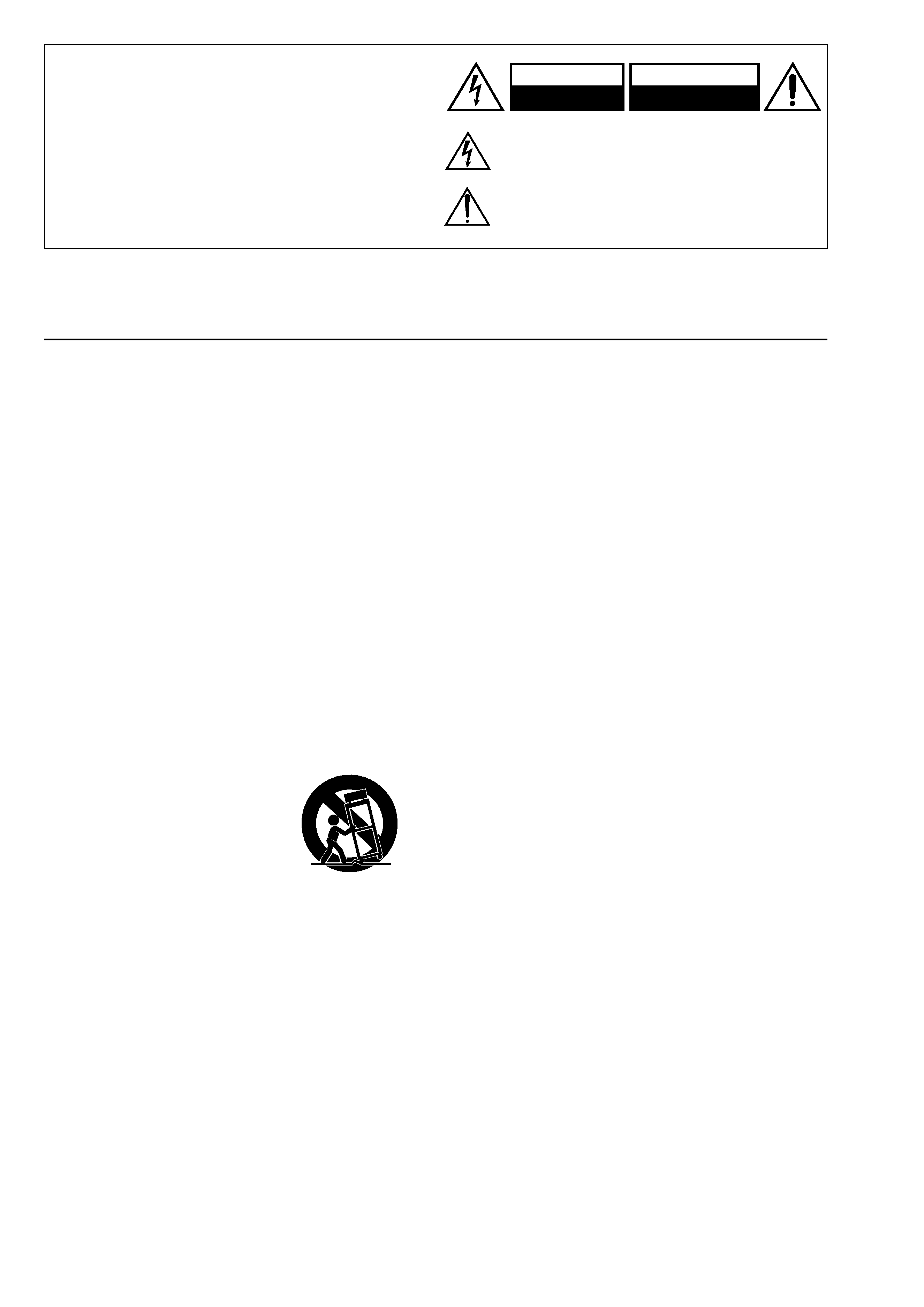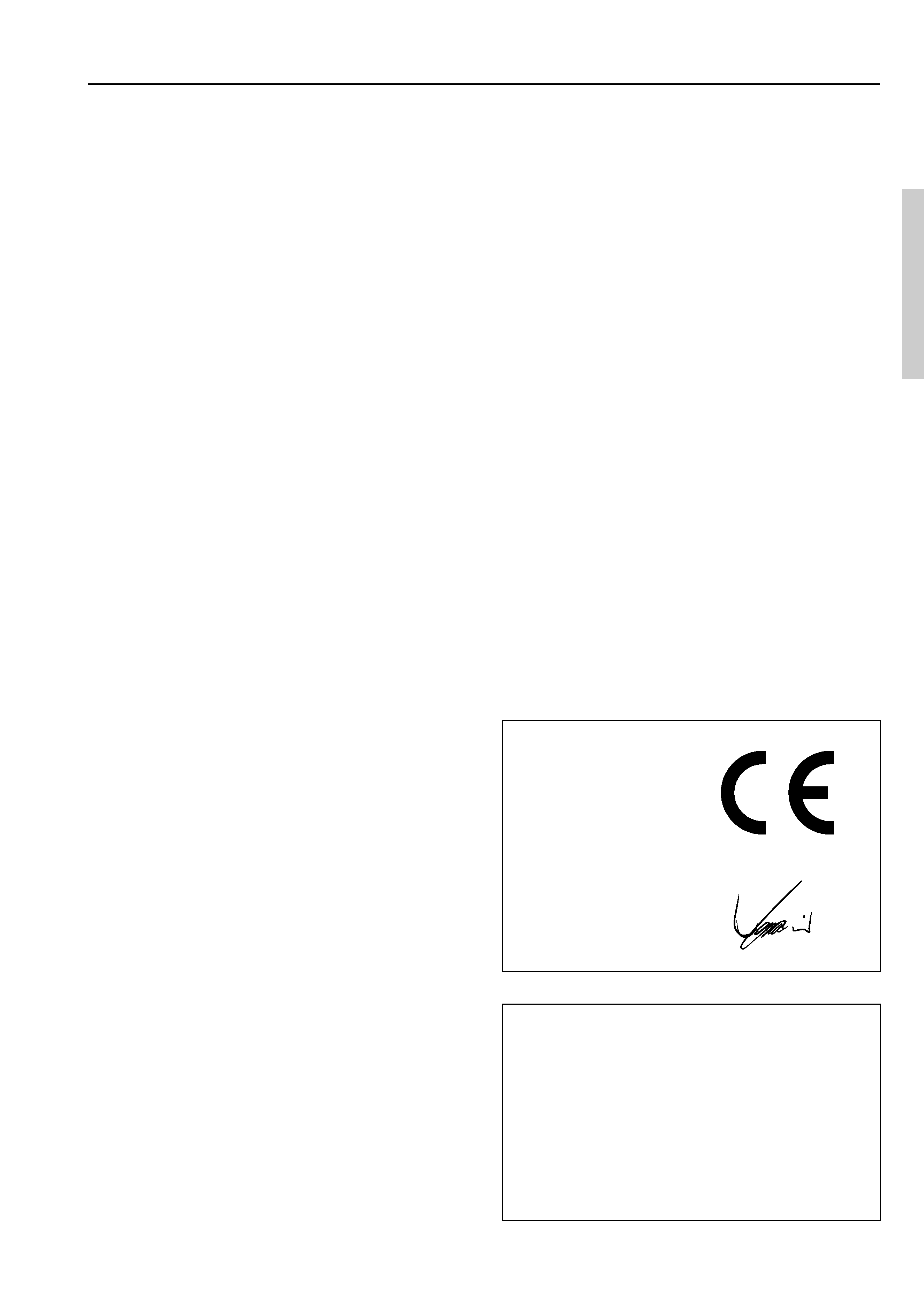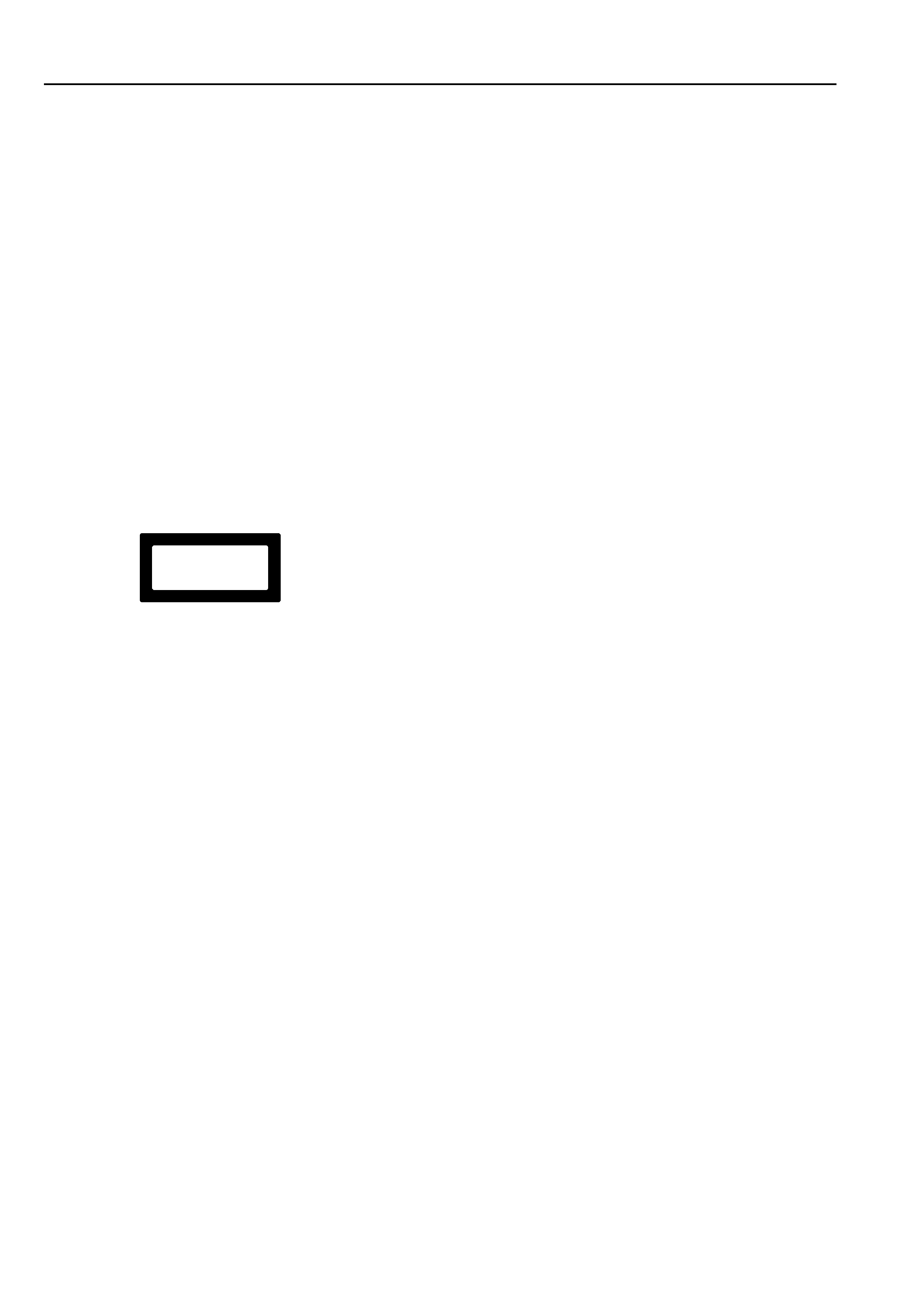
Contents
Thank you for purchasing the Onkyo Hard Disk Music
Library.
Please read this manual thoroughly before making
connections and plugging in the unit. Following the
instructions in this manual will enable you to obtain
optimum performance and listening enjoyment from
your new Hard Disk Music Library. Please retain this
manual for future reference.
MB-S1
Appendix
54
Carry Tunes
45
Operation
16
Before using
2
Hard Disk Music Library
Instruction Manual
Facilities and connections
8

2
1. Read Instructions All the safety and operating instructions
should be read before the appliance is operated.
2. Retain Instructions The safety and operating instructions
should be retained for future reference.
3. Heed Warnings All warnings on the appliance and in the
operating instructions should be adhered to.
4. Follow Instructions All operating and use instructions
should be followed.
5. Cleaning Unplug the appliance from the wall outlet before
cleaning. The appliance should be cleaned only as recom-
mended by the manufacturer.
6. Attachments Do not use attachments not recommended by
the appliance manufacturer as they may cause hazards.
7. Water and Moisture Do not use the appliance near water
for example, near a bath tub, wash bowl, kitchen sink, or laun-
dry tub; in a wet basement; or near a swimming pool; and the
like.
8. Accessories Do not place the appliance on an unstable cart,
stand, tripod, bracket, or table. The appliance may fall, causing
serious injury to a child or adult, and serious damage to the
appliance. Use only with a cart, stand, tripod, bracket, or table
recommended by the manufacturer, or sold with the appliance.
Any mounting of the appliance should follow the
manufacturer's instructions, and
should use a mounting accessory
recommended by the manufac-
turer.
9. An appliance and cart combina-
tion should be moved with care.
Quick stops, excessive force, and
uneven surfaces may cause the
appliance and cart combination to
overturn.
10. Ventilation Slots and openings in the cabinet are provided
for ventilation and to ensure reliable operation of the appliance
and to protect it from overheating, and these openings must not
be blocked or covered. The openings should never be blocked
by placing the appliance on a bed, sofa, rug, or other similar
surface. The appliance should not be placed in a builtin installa-
tion such as a bookcase or rack unless proper ventilation is pro-
vided. There should be free space of at least 5 cm (2 in.) and an
opening behind the appliance.
11. Power Sources The appliance should be operated only from
the type of power source indicated on the marking label. If you
are not sure of the type of power supply to your home, consult
your appliance dealer or local power company.
12. Grounding or Polarization The appliance may be equipped
with a polarized alternating current line plug (a plug having one
blade wider than the other). This plug will fit into the power
outlet only one way. This is a safety feature. If you are unable to
insert the plug fully into the outlet, try reversing the plug. If the
plug should still fail to fit, contact your electrician to replace
your obsolete outlet. Do not defeat the safety purpose of the
polarized plug.
13. Power-Cord Protection Powersupply cords should be
routed so that they are not likely to be walked on or pinched by
items placed upon or against them, paying particular attention
to cords at plugs, convenience receptacles, and the point where
they exit from the appliance.
14. Lightning For added protection for the appliance during a
lightning storm, or when it is left unattended and unused for
long periods of time, unplug it from the wall outlet and discon-
nect the antenna or cable system. This will prevent damage to
the appliance due to lightning and power-line surges.
15. Overloading Do not overload wall outlets, extension cords,
or integral convenience receptacles as this can result in a risk of
fire or electric shock.
16. Object and Liquid Entry Never push objects of any kind
into the appliance through openings as they may touch danger-
ous voltage points or short-out parts that could result in a fire or
electric shock. Never spill liquid of any kind on the appliance.
17. Servicing Do not attempt to service the appliance yourself as
opening or removing covers may expose you to dangerous volt-
age or other hazards. Refer all servicing to qualified service
personnel.
18. Damage Requiring Service Unplug the appliance form the
wall outlet and refer servicing to qualified service personnel
under the following conditions:
A. When the power-supply cord or plug is damaged,
B. If liquid has been spilled, or objects have fallen into the appli-
ance,
C. If the appliance has been exposed to rain or water,
D. If the appliance does not operate normally by following the
operating instructions. Adjust only those controls that are cov-
ered by the operating instructions as an improper adjustment of
other controls may result in damage and will often require ex-
tensive work by a qualified technician to restore the appliance
to its normal operation,
E. If the appliance has been dropped or damaged in any way, and
F.
When the appliance exhibits a distinct change in performance
this indicates a need for service.
19. Replacement Parts When replacement parts are required, be
sure the service technician has used replacement parts specified
by the manufacturer or have the same characteristics as the
original part. Unauthorized substitutions may result in fire,
electric shock, or other hazards.
20. Safety Check Upon completion of any service or repairs to
the appliance, ask the service technician to perform safety
checks to determine that the appliance is in proper operation
condition.
21. Wall or Ceiling Mounting The appliance should be mounted
to a wall or ceiling only as recommended by the manufacturer.
22. Heat The appliance should be situated away from heat
sources such as radiators, heat registers, stoves, or other appli-
ances (including amplifiers) that produce heat.
23. Liquid Hazards The appliance shall not be exposed to drip-
ping or splashing and no objects filled with liquids, such as
vases shall be placed on the appliance.
Important Safeguards
WARNING:
TO REDUCE THE RISK OF FIRE OR ELECTRIC SHOCK,
DO NOT EXPOSE THIS APPLIANCE TO RAIN OR
MOISTURE.
CAUTION:
TO REDUCE THE RISK OF ELECTRIC SHOCK, DO NOT
REMOVE COVER (OR BACK). NO USER-SERVICEABLE
PARTS INSIDE. REFER SERVICING TO QUALIFIED
SERVICE PERSONNEL.
The lightning flash with arrowhead symbol, within an equilateral
triangle, is intended to alert the user to the presence of uninsulated
"dangerous voltage" within the product's enclosure that may be of
sufficient magnitude to constitute a risk of electric shock to persons.
The exclamation point within an equilateral triangle is intended to
alert the user to the presence of important operating and maintenance
(servicing) instructions in the literature accompanying the appliance.
WARNING
RISK OF ELECTRIC SHOCK
DO NOT OPEN
RISQUE DE CHOC ELECTRIQUE
NE PAS
OUVRIR
AVIS
PORTABLE CART WARNING
S3125A

3
1. Recording Copyright
Recording of copyrighted material for other than personal use is
illegal without permission of the copyright holder.
2. Power
WARNING
BEFORE PLUGGING IN THE UNIT FOR THE FIRST TIME,
READ THE FOLLOWING SECTION CAREFULLY.
The voltage of the available power supply differs according to
country or region. Be sure that the power supply voltage of the area
where this unit will be used meets the required voltage (e.g., AC
230 V, 50 Hz or AC 120 V, 60 Hz) written on the rear panel.
Turning off the standby button does not shut off the power com-
pletely. So the power cord should be removed from the AC outlet
when the unit is not used for a prolonged time.
3. Do not touch this unit with wet hands
Do not handle this unit or power cord when your hands are wet or
damp. If water or any other liquid enters the case, take this unit to
an authorized service center for inspection.
4. Location of this unit
Place this unit in a well-ventilated location.
Take special care to provide plenty of ventilation on all sides of this
unit especially when it is placed in an audio rack. If ventilation is
blocked, this unit may overheat and malfunction.
Do not expose this unit to direct sunlight or heating units as this
unit's internal temperature may rise and shorten the life of the
pickup.
Avoid damp and dusty places and places directly affected by vibra-
tions from the speakers. In particular, avoid placing the unit on or
above one of the speakers.
Be sure this unit is placed in a horizontal position. Never place it on
its side or on a slanted surface as it may malfunction.
Do not place near tuners or TV sets.
If placed next to a TV or tuner, it may cause reception interference
resulting in some noise in the TV or tuner output.
5. Care
From time to time you should wipe the front and rear panels and the
cabinet with a soft cloth. For heavier dirt, dampen a soft cloth in a
weak solution of mild detergent and water, wring it out dry, and
wipe off the dirt. Following this, dry immediately with a clean
cloth.
Do not use rough material, thinners, alcohol or other chemical sol-
vents or cloths since these could damage the finish or remove the
panel lettering.
6. Points to remember
If this unit is brought from a cold environment to a warm one or is
in a cold room that is quickly heated, condensation may form on the
pickup, preventing proper operation. In this case, remove the disc
and leave the power ON for about one hour to remove the conden-
sation.
When transporting this unit, be careful not to bump it.
DANGER:
INVISIBLE LASER RADIATION WHEN OPEN AND INTER-
LOCK FAILED OR DEFEATED. AVOID DIRECT EXPOSURE
TO BEAM.
CAUTION:
THIS PRODUCT UTILIZES A LASER. USE OF CONTROLS
OR ADJUSTMENTS OR PERFORMANCE OF PROCEDURES
OTHER THAN THOSE SPECIFIED HEREIN MAY RESULT IN
HAZARDOUS RADIATION EXPOSURE.
For U.S. model
The laser is covered by a housing which prevents exposure during
operation or maintenance. However, this product is classified as a
Laser Product by CDRH (Center for Devices and Radiological
Health) which is a department of the Food and Drug Administra-
tion. According to their regulations 21 CFR section 1002.30, all
Precautions
manufactures who sell Laser Products must maintain records of
written communications between the manufacturer, dealers and
customers concerning radiation safety. If you have any complaints
about instructions or explanations affecting the use of this product,
please feel free to write to the address on the back page of this
manual. When you write us, please include the model number and
serial number of your unit.
In compliance with Federal Regulations, the certification, identifi-
cation and the period of manufacture are indicated on the rear
panel.
FCC INFORMATION FOR USER
CAUTION:
The user changes or modifications not expressly approved by the
party responsible for compliance could void the user's authority to
operate the equipment.
NOTE:
This equipment has been tested and found to comply with the limits
for a Class B digital device, pursuant to Part 15 of the FCC Rules.
These limits are designed to provide reasonable protection against
harmful interference in a residential installation. This equipment
generates, uses and can radiate radio frequency energy and, if not
installed and used in accordance with the instructions, may cause
harmful interference to radio communications. However, there is
no guarantee that interference will not occur in a particular installa-
tion. If this equipment does cause harmful interference to radio or
television reception, which can be determined by turning the equip-
ment off and on, the user is encouraged to try to correct the interfer-
ence by one or more of the following measures:
· Reorient or relocate the receiving antenna.
· Increase the separation between the equipment and receiver.
· Connect the equipment into an outlet on a circuit different from
that to which the receiver is connected.
· Consult the dealer or an experienced radio/TV technician for
help.
Declaration of Conformity
We, ONKYO EUROPE
ELECTRONICS GmbH
INDUSTRIESTRASSE 20
82110 GERMERING,
GERMANY
GERMERING, GERMANY
ONKYO EUROPE ELECTRONICS GmbH
I. MORI
declare in own responsibility, that the ONKYO product described
in this instruction manual is in compliance with the corresponding
technical standards such as EN60065, EN55013, EN55020 and
EN61000-3-2, -3-3.
Memory Preservation
This unit does not require memory preservation batteries. A
built-in memory power back-up system preserves the contents
of the memory during power failures and even when the unit is
unplugged. The unit must be plugged-in in order to charge the
back-up system.
The memory preservation period after the unit has been un-
plugged varies depending on climate and placement of the
unit. On the average, memory contents are protected over a
period of a few weeks after the last time the unit was un-
plugged. This period is shorter when the unit is exposed to a
highly humid climate.

4
For Canadian model
NOTE: THIS CLASS B DIGITAL APPARATUS COMPLIES
WITH CANADIAN ICES-003.
For models having a power cord with a polarized plug:
CAUTION: TO PREVENT ELECTRIC SHOCK, MATCH
WIDE BLADE OF PLUG TO WIDE SLOT, FULLY INSERT.
Modele pour les Canadien
REMARQUE: CET APPAREIL NUMÉRIQUE DE LA
CLASSE B EST CONFORME À LA NORME NMB-003 DU
CANADA.
Sur les modèles dont la fiche est polarisée:
ATTENTION:
POUR
ÉVITER
LES
CHOCS
ÉLECTRIQUES, INTRODUIRE LA LAME LA PLUS LARGE
DE LA FICHE DANS LA BORNE CORRESPONDANTE DE LA
PRISE ET POUSSER JUSQU'AU FOND.
For European model
This unit contains a semiconductor laser system and is classified as
a "CLASS 1 LASER PRODUCT". So, to use this model properly,
read this Instruction Manual carefully. In case of any trouble,
please contact the store where you purchased the unit. To prevent
being exposed to the laser beam, do not try to open the enclosure.
Precautions
"CLASS 1 LASER
PRODUCT"
This label on the rear panel states that:
1. This unit is a CLASS 1 LASER PRODUCT and employs a laser
inside the cabinet.
2. To prevent the laser from being exposed, do not remove the
cover. Refer servicing to qualified personnel.
For British model
Replacement and mounting of an AC plug on the power supply
cord of this unit should be performed only by qualified service per-
sonnel.
IMPORTANT
The wires in the mains lead are coloured in accordance with the
following code:
Blue
: Neutral
Brown : Live
As the colours of the wires in the mains lead of this apparatus may
not correspond with the coloured markings identifying the termi-
nals in your plug, proceed as follows:
The wire which is coloured blue must be connected to the terminal
which is marked with the letter N or coloured black.
The wire which is coloured brown must be connected to the termi-
nal which is marked with the letter L or coloured red.
IMPORTANT
A 5 ampere fuse is fitted in this plug. Should the fuse need to be
replaced, please ensure that the replacement fuse has a rating of 5
amperes and that it is approved by ASTA or BSI to BS1362. Check
for the ASTA mark or the BSI mark on the body of the fuse.
IF THE FITTED MOULDED PLUG IS UNSUITABLE FOR THE
SOCKET OUTLET IN YOUR HOME, THEN THE FUSE
SHOULD BE REMOVED AND THE PLUG CUT OFF AND DIS-
POSED OF SAFELY. THERE IS A DANGER OF SEVERE
ELECTRICAL SHOCK IF THE CUT OFF PLUG IS INSERTED
INTO ANY 13 ampere SOCKET.
If in any doubt, please consult a qualified electrician.

5
Contents
Before using
Important Safeguards ......................................... 2
Precautions ......................................................... 3
Contents .............................................................. 5
Main Features ...................................................... 6
Supplied accessories ......................................... 7
Before using this unit ......................................... 7
Installing the remote controller batteries ......................... 7
Using the remote controller .............................................. 7
Facilities and connections
Parts names and functions ................................ 8
Connecting the MB-S1 ..................................... 12
Connecting to other components ................................... 13
Notes on CD and the internal hard disk drive .... 14
Rules for recording digital input ..................... 15
Operation
Understanding the basic operations before
using the MB-S1........................................... 16
Turning on the power ..................................................... 18
Switching the CD player and HDD ............................... 18
Opening the CD tray ...................................................... 18
Setting date and time ....................................... 19
Setting date and time ...................................................... 19
Displaying the date and time (Remote controller only) .... 19
Listening to an audio CD or CD-R .................. 20
Listening to an audio CD or CD-R ................................ 20
Stopping playback .......................................................... 20
Selecting the track .......................................................... 20
Reversing and fast forwarding ....................................... 20
Playing tracks repeatedly (remote controller only) ....... 20
Switching the display information ................................. 21
Recording .......................................................... 22
Recording an audio CD or CD-R synchronously ............. 22
Dubbing all tracks on a CD (CD dubbing) .................... 23
Dubbing a track on a CD ................................................ 23
Recording audio signals from external devices ............. 24
Adjusting the recording level (Analog input only) ....... 25
Listening to tracks recorded on the HDD ....... 26
Listening to tracks recorded on the HDD ...................... 26
Stopping the playback .................................................... 26
Selecting a track you want to listen to ........................... 26
Reversing and fast forwarding ....................................... 26
Playing tracks in a group in random order .................... 26
Playing tracks repeatedly ............................................... 26
Switching the display information ................................. 27
Naming tracks recorded on the HDD .............. 28
Entering the name of a track .......................................... 28
Entering characters ......................................................... 28
Selecting a genre ............................................................ 29
Appendix
Troubleshooting guide ..................................... 54
Main unit and remote controller .................................... 54
Playback .......................................................................... 54
Recording/Editing .......................................................... 54
Timer ............................................................................... 54
Others .............................................................................. 55
Carry Tunes .................................................................... 55
If one of the messages shown below appears ................ 55
Carry Tunes
Overview of the supplied CarryTunes software .... 45
System Requirements ...................................... 46
Setting the PC ................................................... 46
Installing the device driver ............................................. 46
Confirming the installation of the device driver ............ 50
Installing the Carry Tunes ................................ 51
Install Procedure ............................................................. 51
Using Carry Tunes ............................................ 52
Registering MP3 files with Carry Tunes ........................ 52
Main operations .............................................................. 52
Transferring MP3 music files to the MB-S1 ................. 53
Erasing tracks recorded on the HDD .............. 30
Erasing a track ................................................................ 30
Erasing an entire group .................................................. 31
Creating a play list ............................................ 32
Creating a play list .......................................................... 32
Listening to tracks using a play list ................ 34
Listening to tracks using a play list ............................... 34
Stopping the playback .................................................... 34
Selecting the track you want to listen to ........................ 34
Reversing and fast forwarding ....................................... 34
Playing tracks in a play list in random order ................. 35
Playing tracks in a play list repeatedly .......................... 35
Exiting the play list playback mode ............................... 35
Editing the play lists ......................................... 36
Naming a play list .......................................................... 36
Moving a track within a play list ................................... 37
Deleting a track in a play list ......................................... 37
Deleting a play list .......................................................... 38
Using various playback features ..................... 39
Playing track in sorted order .......................................... 39
Marking a track as you favorite (FAVORITE IT function) .... 40
Playing your favorite tracks only ................................... 40
About combination of play modes ................................. 41
Displaying track information ......................................... 41
Using timer functions ....................................... 42
Setting a timer ................................................................ 42
Specifications ................................................... 44
